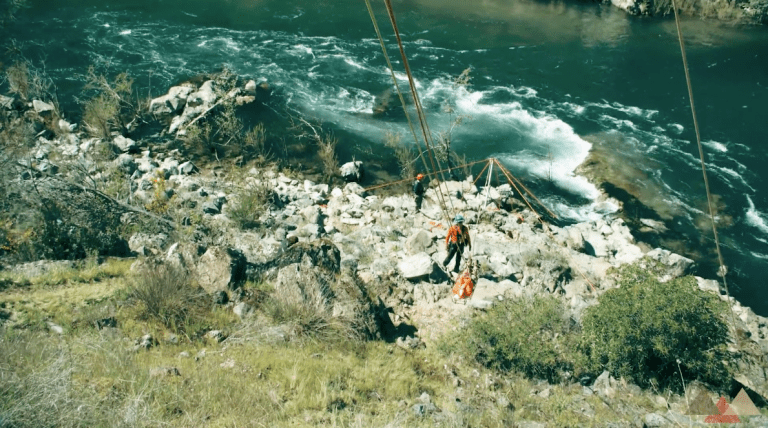Tom had recently joined his local search and rescue team, ready to dive into the rigorous training required for this crucial work. The team had always relied heavily on hands-on training, believing that real-world experience was irreplaceable. However, they were starting to see the value of integrating online education as an adjunct to their practical sessions. To test this idea, they tasked Tom with exploring online resources that could enhance their understanding of mechanical advantage systems and mainline operations.
Tom’s mission was clear: find reliable online content that would complement their hands-on training, offering both theoretical depth and practical application. His research led him to Rigging Lab Academy, a platform renowned for its detailed and practical approach to rope rescue education. Three blogs in particular caught Tom’s attention, each addressing key aspects of the topics he was tasked to explore.
1. Advanced Techniques in Mechanical Advantage Systems
Tom began by diving into Advanced Techniques in Mechanical Advantage Systems. This blog provided an in-depth look at the complexities of mechanical advantage systems, explaining how these setups can be fine-tuned to maximize efficiency and safety during rescue operations. The blog emphasized the importance of understanding both the theoretical principles and practical applications of these systems. Tom found the breakdown of advanced techniques especially useful, as it offered insights into how to optimize the use of pulleys and other equipment in real-world scenarios.
The problem addressed in this blog was the challenge of managing heavy loads in rescue operations, particularly in difficult environments where traditional methods might fail. The solution lay in mastering advanced mechanical advantage techniques, which allow rescuers to multiply their force and control the movement of heavy objects with precision. The resolution provided Tom with actionable strategies to implement these techniques in future training exercises, ensuring that his team could handle even the most challenging rescue scenarios with confidence.
2. Mechanical Advantage, Part 1
Next, Tom explored the foundational concepts in Mechanical Advantage, Part 1. This blog served as an essential primer, introducing the basic principles behind mechanical advantage systems. Tom appreciated the clear explanations of how these systems work, including the various configurations that can be used depending on the specific rescue situation. The blog covered the fundamental mechanics of pulleys, including the different types of setups, such as simple and compound systems, and how they can be used to reduce the effort required to lift or move loads.
The blog highlighted a common problem faced by rescuers: the need to move heavy objects or patients with minimal physical strain and maximum safety. The solution provided was a detailed exploration of how mechanical advantage systems can be configured to suit different rescue scenarios. The resolution reinforced the importance of understanding these basic principles as a foundation for more advanced techniques. Tom realized that mastering these fundamentals was crucial for ensuring the effectiveness of his team’s operations.
3. Mechanical Advantage, Part 3
Finally, Tom delved into Mechanical Advantage, Part 3, which built upon the earlier content by exploring more advanced aspects of mechanical advantage. This blog discussed the practical applications of these systems in various rescue scenarios, emphasizing the need for precision and adaptability. Tom was particularly interested in the examples provided, which showed how to apply these techniques in complex rescue operations where conditions might change rapidly.
The problem identified in this blog was the challenge of adapting mechanical advantage systems to meet the demands of unpredictable rescue environments. The solution involved advanced techniques that allow rescuers to modify their setups quickly and efficiently, ensuring that they can maintain control over the situation at all times. The resolution gave Tom confidence in his ability to apply these techniques in the field, knowing that he could rely on the principles he had learned to guide his decision-making during rescues.
Conclusion
Armed with the knowledge from these three blogs, Tom returned to his team with a new perspective on the role of online education in their training. He demonstrated how the insights he had gained from Rigging Lab Academy could effectively complement their hands-on exercises, providing them with the theoretical grounding and practical strategies needed to enhance their rescue operations. The team, seeing the clarity and depth of understanding Tom had developed, began to see the potential benefits of integrating online resources into their training regimen.
This journey not only solidified Tom’s understanding of mechanical advantage systems but also opened the door for his team to embrace a more comprehensive approach to their training, blending the best of both online education and practical experience.
Links Used:
- Advanced Techniques in Mechanical Advantage Systems
- Mechanical Advantage, Part 1
- Mechanical Advantage, Part 3
Peace on your Days
Lance










